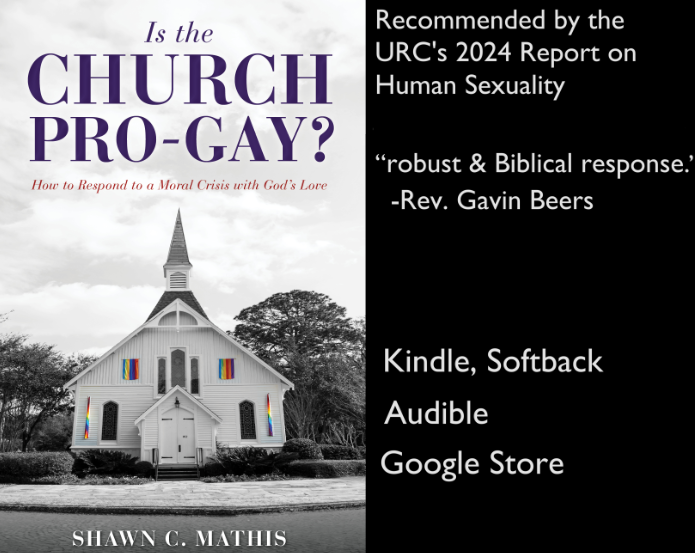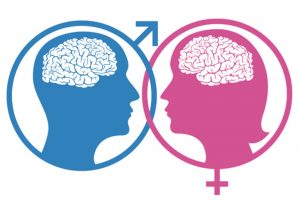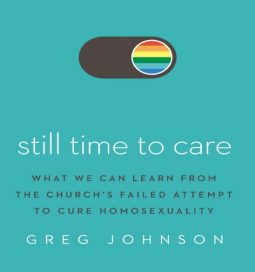
[One of the articles that got me canned from examiner.com back in 2015. Slightly modified to reflect the Obergefell ruling.]
The 60s were the beginning of the American sexual revolution. A revolution that leavened society for the next fifty years. It has now matured into the second sexual revolution of the early 21st century.
And this second revolution is not limited to so-called gay marriage. Already the Obama administration has quietly expanded transgender legal “rights” without congressional approval. And other deviations will surely follow:
“[I cannot] condemn [mild pedophilia in my childhood] by the same standards as I or anyone would today.” —Richard Dawkins, interview
“Legalized polygamy in the United States is the constitutional, feminist, and sex-positive choice. More importantly, it would actually help protect, empower, and strengthen women, children, and families.”—Legalize Polygamy! at Slate
“Paedophilia is natural and normal for human males.”—Philip Tromovitch, a professor at 2013 University of Cambridge conference
But three sexual deviants do not make a trend. But a Supreme Court ruling does. And the recent New York workplace transgender laws make a trend as well.
The reasoning used by the Supreme Court and others is opening a sexual Pandora’s Box that few Americans can imagine.
Legalizing Polygamy
Polygamy had a partial victory handed to it in the fall of 2014 by a federal judge. The so-called family of the TV reality show “Sister Wives” filed a lawsuit against the standing polygamy laws. Their reasoning? Being an arrangement between consenting adults, the government has no business outlawing polygamy.
Their lawyer, Jonathan Turley, Shapiro professor of public interest at George Washington University, rejoiced that such morality laws are fading away. One Professor of Law at UCLA recently suggested a libertarian approach to polygamy, opening the door to more variations of adult relationships.
A Columbia Law Review article, according to the Washington Times, proposed a regulated polygamy, “consistent with contemporary social norms.” A 2014 Atlantic piece offered a sympathetic view of polygamy.
The latest Barna poll suggests about 16% of the populace is in favor of polygamy. Almost triple what it was less than ten years ago.
But the number of Americans in favor of polygamy is irrelevant if the right people in the right position at the right time make the right argument:
“DOMA was struck down in no small part because it picks out a certain class of people [homosexuals] and, by denying them recognition of their marriages, denies their families equal freedom and dignity. Can it be denied that polygamous families, whose marital arrangements are illegal, much less unrecognised, are denied equal liberty and are made to suffer the indignity of active discrimination?”
Thus argued an article from the respected Economist. The conclusion is obvious: legalize polygamy. The reasoning for polygamy was embedded in the reasoning for the legalization of homosexual unions from the beginning.
And by logical extension, if the sexes of a relationship are legally irrelevant, then why should the number of members be illegal? Why not mix it all up?
Is this a simple screed from a despondent conservative? Well, as soon as the Supreme Court created a new homosexual right, Politico published an article arguing for polygamy based upon the same arguments for so-called homosexual marriage.
Ilya Somin, Professor of Law at George Mason University, who co-wrote an amicus in favor of gay marriage, openly admitted the SCOTUS reasoning used dubious and incoherent logic, yet he notes:
“If fundamental rights are not ‘defined by who exercised them in the past,’ [America’s 200 year history of heterosexual marriage] then why should they be defined by the number of people involved in the union in question?”
Polygamy cannot stay taboo. And after that?
Enter polyamory.
Practicing Polyamory
Polygamy, as such, is not getting near as much attention in the opinion pieces as polyamory (more than one consenting relationship at a time). This makes sense: many Americans already practice something similar: serial monogamy (though adultery or divorce), fornication and the like. Polygamy, however, is eshewed by feminists for its male dominance.
Polyamory is slowly becoming mainstream, as a 2014 Atlantic article demonstrates, Up for Polyamory? Creating Alternatives to Marriage. Five months later the Atlantic published another article favoring polyamory. Redbook published a sympathy-piece for polyamory. Even Scientific American studied the issue.
The Daily Beast essay gives the strongest argument for polyamorous relationships, explicitly tying the arguments to the legalization of gay marriage:
“What if gay marriage really will change the institution of marriage, shifting conceptions around monogamy and intimacy?…Is non-monogamy one of the things same-sex marriage can teach straight ones, along with egalitarian chores and matching towel sets?”
Legalization of an ever-expanding list of possible relationships has been the goal of a number of academics, lawyers and social leaders (including Gloria Steinem, Barbara Ehrenreich, and Kenji Yoshino) for the last several years according to the public manifesto, Beyond Same-Sex Marriage.
The goal is no longer “gay marriage” but any kind of marriage, any “committed, loving households in which there is more than one conjugal partner.” This would include: “Queer couples who decide to jointly create and raise a child with another queer person or couple, in two households.”
But why stop with two couples sharing the raising of children? Why not throuples sharing with throuples? Why not use a whole village to raise our children?
And why stop with binary genders? There are third-gendered people. There are pansexual people, changing their gender at will. And there are non-specific gender people. Shouldn’t they all receive legal recognition if they want to marry, who or whatever it is they wish to marry?
Don’t laugh. It’s already happening in India and Australia.
Even then, the limits of libertarian and progressive imaginations are too narrow: why not legalize and promote all paraphilic relationships? Why should the strange and alien be suppressed as a minority view? Already they are calling themselves a “sexual minority.”
There is incest (aren’t siblings free to love?). There is bestiality (aren’t animals people too?). There is robot love (aren’t computers capable of relationships?).
This is no joke. Go to the links. These are mainstream websites.
The arguments are simple: “why should binary-gendered monogamous families get legal advantages?” “it’s between consenting adults,” “it’s about equality,” “it’s about love”…even the love of the youth.
Normalizing Pedophilia
In 2011 a 60-year old Italian social worker was found guilty of pedophilia. In 2013 the Italian Supreme Court “ordered a retrial because the verdict did not fully account for the ‘consensus,’ the existence of an amorous relationship, the absence of physical force, the [eleven-year-old] girl’s feelings of love.”
The final normalization of pedophilia will occur with a whimper not a bang. And it will occur in either one of two ways: through the continued short-sighted argumentation currently used for polyamory or (more likely) through the expansion of sexual rights to the youth.
Two experts testifying in 2013 before a Canadian parliamentary commission presented pedophilia as a “sexual orientation.” A professor, interviewed in The Atlantic, also believed that one is born that way. Harvard medical school assumes that “like other sexual orientations, pedophilia is unlikely to change.”
The orientation argument is the foundation for normalizing pedophilia because it plays upon sympathy. Salon is playing this trump card with its 2015 article, “I’m a pedophile, but not a monster.”
On the other hand, youth sexual rights have been pushed in American schools and doctors’ offices for years now. Legally, think of the “right” to have an abortion, to have access to contraceptives and now, especially in Massachusetts, to have a child’s sexual identity changed.
Gay rights activist, Peter Tatchell (Australian LGBTI leader), has arguedfor lowering the age of consent between youths, ostensibly, to encourage “young people to stand up for their sexual rights [this] will make them more confident and less likely to be victims of sexual exploitation.”
Peter is not alone in such reasoning: the International Planned Parenthood Federation (IPPF), Child’s Rights International Networkand Choice of Youth all argue for such rights among the young.
Back in 1973, Hillary Clinton offered a way to expand children’s rights. Writing in the Harvard Educational Review, she offered (among other approaches) that the state could “abolish the status of minority” and assume competence of children unless “proven otherwise.”
Don’t laugh. Similar reasoning is now offered on an international scale by the IPPF. In fact, the same organization baldly declared:
“Sexual rights are human rights and apply to everyone no matter what age.”
Already, groups like the YMCA have succumbed to the sexual revolution by allowing transgendered (males) into young teen-age girls’ locker rooms. And the Massachusetts school system is already knee-deep in this twisted revolution.
Closer to home, NPR reported: “But in some courtrooms, attorneys argue that children can make decisions about whom they have sex with—and in some cases, those attorneys are winning.”
This other-worldly reality has (naturally) materialized in California. The California Supreme Court interpreted recent legislation as: “juveniles may be able to consent in certain circumstances.”
What does this mean in the concrete here and now? Jennifer Drobac, who teaches juvenile law and sexual harassment law at Indiana University, explained:
“There’s no basement on this…You could take a 9-year-old and say that a 9-year-old could consent, under this reading of the change of law in California.”
No one should be laughing anymore.
Such reasoning will open the doors to legalized pedophilia. What age is a peer? If they have “sexual rights,” who is to say they cannot chose an older teen-partner? Are not age-consent laws subject to change anyway? Why not push the laws closer to twenty? If it is about love, who are we to stop them?
Undermining the Sexual Revolution
The 60s were the beginning of the American sexual revolution. A revolution that leavened society for the next fifty years. It has now matured into the second sexual revolution of the early 21st century.
If Americans keep swallowing the libertarian pill of free love, there will be no stopping this revolution’s abortion of natural morality.
Socially, the average American can only stand up to this continuing onslaught if they are firmly rooted in good moral teachings.
Spiritually, the call of repentance from complacency followed by trust in Christ is sorely needed.
Politically, it is up to the current generation of Americans to undermine this revolution with informed voting. That means researched articles such as this one should be passed on to others.
And it will involve cooperation between different conservative religions.
It may look hopeless, but socially, spiritually and politically, it is not over until the conservatives block gives up. And that would be a revolution in itself.







